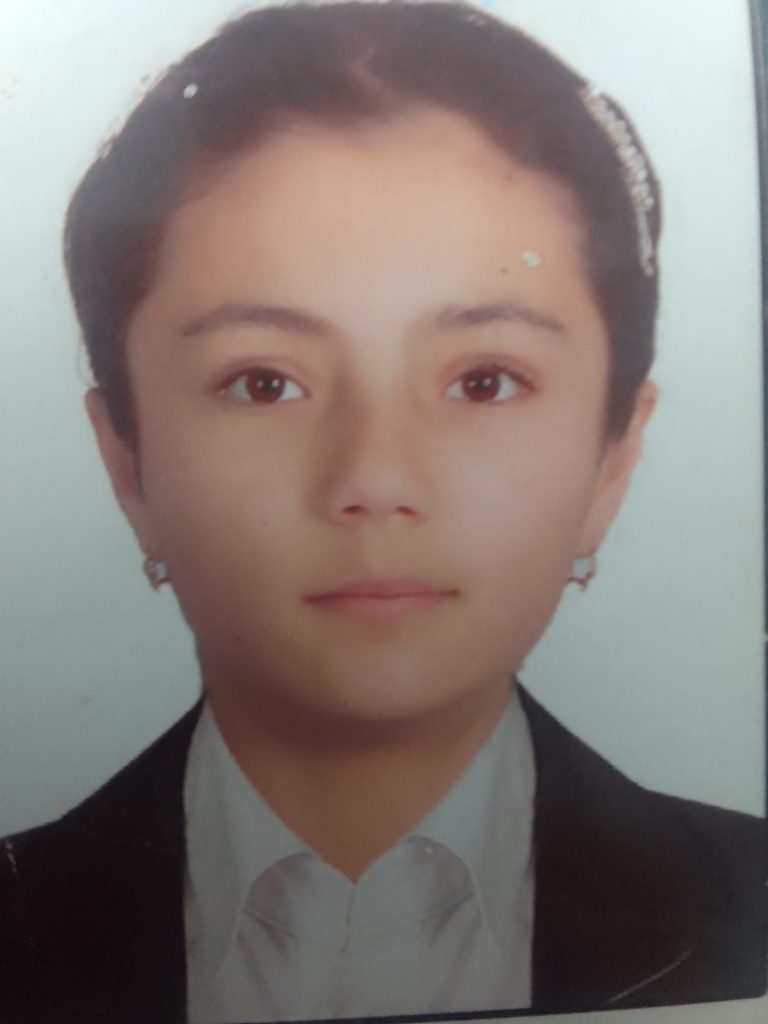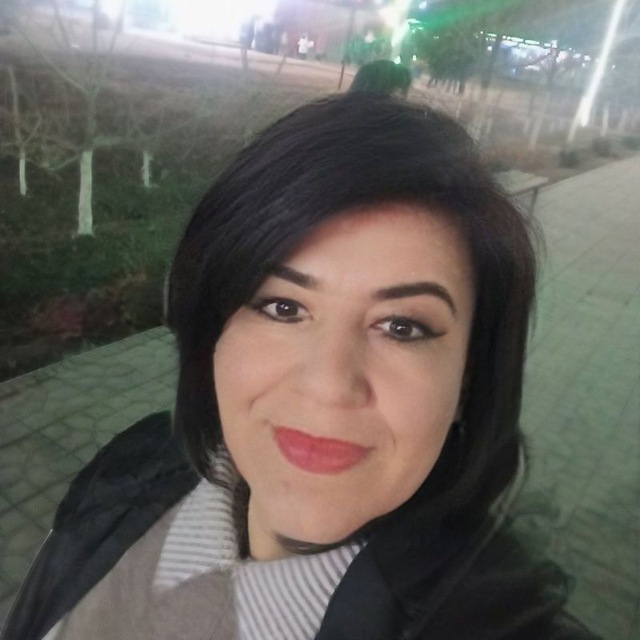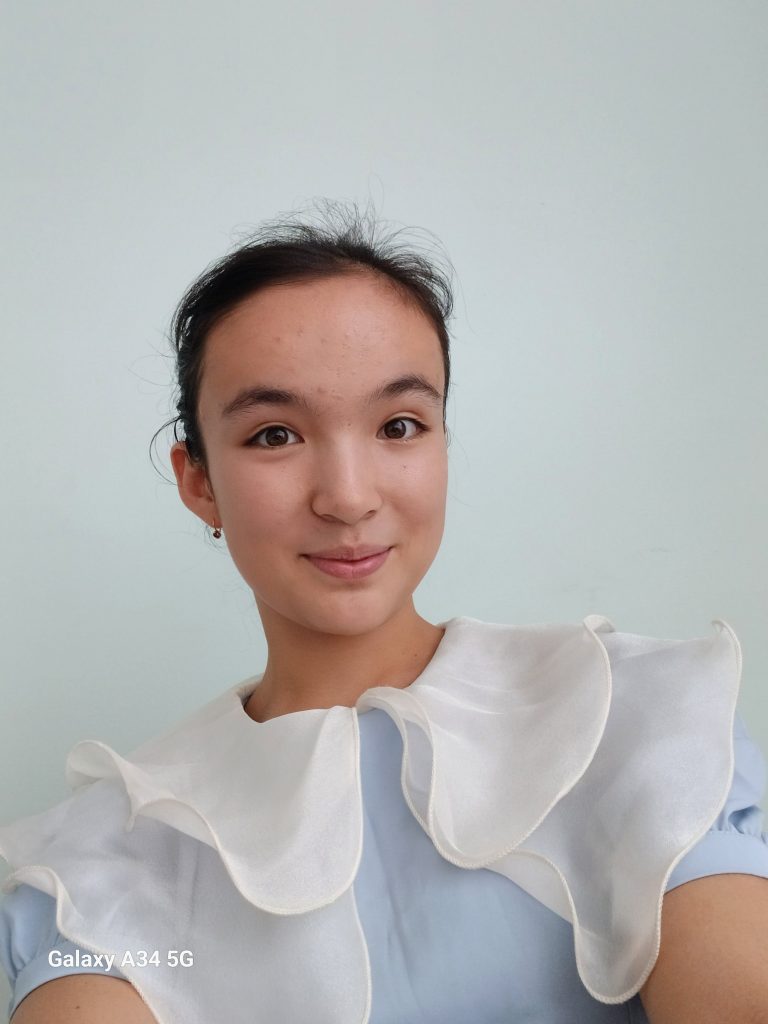
I love Uzbekistan
It is unique in the world
He is my pride
Mercy is a fiery mother
I am still a student
I have a bright future
Tie up your country
Do it, the beating
Dilmurodova Dilfuza was born January 9, 2010. She is a student and poet.


AN OVERVIEW OF THE MAIN BRANCHES OF LINGUISTICS: A SCIENTIFIC PERSPECTIVE
Halimova Nilufar Hakimovna
A student of Bukhara state university
Abstract: Linguistics is a vast disciplinary field that explores the structure, acquisition, and usage of language. This article provides a comprehensive overview of the main branches in linguistics from a scientific standpoint. The branches discussed include phonetics, phonology, morphology, syntax, semantics, pragmatics, sociolinguistics, psycholinguistics, and neurolinguistics. Each branch is described in terms of its primary focus, methodologies, and contributions to our understanding of language. Additionally, the article highlights the interconnectedness of these branches and their relevance in various research domains.
Keywords: linguistics, branches, phonetics, phonology, morphology, syntax, semantics, pragmatics, sociolinguistics, psycholinguistics, neurolinguistics.
The interplay between language and science has played a pivotal role in shaping our understanding of linguistic phenomena. This introduction outlines the significance of scientific approaches in the study of language and introduces the main branches of linguistics that will be explored in this article.
Phonetics is the study of the sounds of human speech. It involves analyzing and categorizing the different sounds, known as phonemes, that are used in spoken language. Phonetics examines the physical properties of speech sounds, such as how they are produced by the vocal organs, as well as the auditory properties, such as how they are perceived by the human ear. By studying phonetics, linguists can gain insights into the patterns and variations of speech sounds across different languages and dialects.
Phonology is a subfield of linguistics that studies the systematic organization of sounds in language. It focuses on the ways in which sounds function and interact within a particular language or languages. Phonology examines the rules and patterns governing the sound structure of words, phrases, and sentences, including the study of phonemes, phonological processes, phonotactics, and the prosodic features of language such as stress, intonation, and rhythm.
Phonology involves analyzing the inventory of sounds in a language, known as phonemes, and understanding their distribution and patterns. Phonemes are abstract units of sound that can be contrasted to distinguish meaning in a particular language. For example, the sounds /p/ and /b/ in English are phonemes because they can differentiate words like “pat” and “bat.”
Morphology is the branch of linguistics that studies the structure and formation of words. It examines how words are constructed from smaller units called morphemes, which are the smallest meaningful units of language. Morphemes can be classified into two types: free morphemes, which can stand alone as words (e.g., “cat,” “run”), and bound morphemes, which are attached to other morphemes to create words (e.g., “un-” in “undo,” “-ed” in “walked”).
Morphology analyzes the different ways in which morphemes can combine to form words. This includes studying affixation, which involves adding prefixes or suffixes to words (e.g., adding “un-” to “happy” to create “unhappy”), as well as other processes such as compounding (e.g., combining “black” and “board” to form “blackboard”) and derivation (e.g., adding “-er” to “teach” to create “teacher”).
Syntax delves into the arrangement of words to form grammatical sentences. It studies the rules and principles governing sentence structure and the relationships between words and phrases. This section explores various theoretical frameworks in syntax, such as generative grammar and dependency grammar.
Semantics examines the meanings of words, phrases, and sentences in language. It explores how meaning is constructed and interpreted, focusing on lexical and compositional semantics. This section provides an overview of semantic theories and the tools used in semantic analysis.
Pragmatics is a subfield of linguistics that studies how context influences the meaning and interpretation of language. It focuses on the ways in which people use language in actual speech situations to achieve their communication goals.
Unlike semantics, which deals with the literal meaning of words and sentences, pragmatics examines how meaning is constructed through the use of language in specific contexts. It explores how speakers and listeners make inferences, convey intentions, and interpret meaning based on shared knowledge, social norms, and cultural conventions.
Pragmatics also investigates various aspects of language use, such as deixis (the way language refers to the context in which it is used), implicature (the implied meaning that goes beyond the literal meaning of words), speech acts (the actions performed through speech, such as making requests or giving orders), and politeness strategies.
Sociolinguistics is the study of how language and society intersect. It examines how language is influenced by various social factors such as class, gender, ethnicity, and age, as well as how language use reflects and shapes social identity and relationships. Sociolinguists investigate language variation and change, language attitudes and ideologies, multilingualism, language policy and planning, and language in interaction. They use a variety of methods, including surveys, interviews, and observations, to analyze language use in different social contexts and communities. The field of sociolinguistics helps us understand how language is used and interpreted in different social settings, and how it contributes to social cohesion or inequality.
Psycholinguistics investigates how language and cognition interact. It explores processes involved in language comprehension, production, and acquisition. This section delves into psycholinguistic experimental paradigms, language processing models, and language disorders.
Psycholinguistics combines knowledge from various fields, including linguistics, psychology, cognitive science, and neuroscience, to explore the mental processes underlying language. Researchers in this field often conduct experiments to investigate topics such as language development in children, language processing in adults, language disorders, and the relationship between language and thought.
Psycholinguistics has practical applications in fields such as education, speech therapy, and language technology. By understanding the cognitive processes involved in language, researchers can develop interventions and tools to facilitate language learning and communication.
Neurolinguistics studies the neural basis of language processing and production. It examines how the brain processes linguistic information and the neural correlates of language disorders. The section highlights neuroimaging techniques, language localization, and theories of language representation in the brain.
This concluding section emphasizes the interdisciplinary nature of linguistics and the importance of scientific methods in advancing our understanding of language. It summarizes the key contributions and interconnections between the main branches of linguistics, paving the way for future research and discoveries in this dynamic field.
References:
1. Chomsky, N. (1957). Syntactic structures. Walter de Gruyter.
2. Ladefoged, P., & Johnson, K. (2011). A course in phonetics. Cengage Learning.
3. Hayes, B. (2009). Introductory phonology. John Wiley & Sons.
4. Bauer, L. (2003). Introducing linguistic morphology. Edinburgh University Press.
5. Saeed, J. (2009). Semantics. John Wiley & Sons.
6. Yule, G. (1996). Pragmatics. Oxford University Press.
7. Wardhaugh, R. (2010). An introduction to sociolinguistics. John Wiley & Sons.
8. Field, J. (2003). Psycholinguistics: The Key Concepts. Routledge.
9. Poeppel, D., & Hickok, G. (2004). Towards a new functional anatomy of language. Cognition, 92(1-2), 1-12.
10. Campbell, L. (2013). Historical linguistics: An introduction. MIT Press.
KHALIMOVA NILUFAR HAKIMOVNA
is the student of Bukhara State University, Foreign languages faculty.
Active participant of more than 200 national and international competitions, conferences, forums, winner of a number of competitions.
A graduate of the Bukhara School of Young Journalists, the youngest ambassador in Uzbekistan, a member of the international organization “Noel Lorenz House of Fiction” (NLHF), the organization “APEU” of El Salvador, the international organizations “Wisdom University”. She is the author of the “CREATIVE YOUTH” project organized on the scale of the republic. IELTS certificate holder.
Nilufar Khalimova is author of “My sun is my mother” (2018), “My shiny Homeland (2019). “Adventure’s of Aral (2020) books and the translator of called “Telechild” which was written by uzbek children’s writer Khudayberdi Tukhtaboyev.
She is author of scientific articles called:
“Convenient mechanisms to further increase the quality of education in the form of distance education”;
“The psychology of modern education”;
“The role of women in society”;
“Formation of fluent speech in children”;
“Patriotism and its importance in involving young people in the armed forces”;
“Ancient Khorezm State scientific research on the terms of “BIG KHOREZM”, “ANCIENT KHOREZM” and “KHOREZM” and others.
She took the award “Nelson Mandela 2022” of the German Writers’ Association.
Participant and grand prize winner of the “Great Silk Road International Literary and Scientific Festival” held by the Writers’ Union of Germany, Ukraine and Turkey.
Her poems and articles are published on the district, regional and national level, as well as published in newspapers, magazines and literary websites of countries such as USA, Turkey, India, Germany, Ukraine, Malaysia.

A COUNTRY OF VERY HAPPY PEOPLE
My trip to the Amudarya district of the Republic of Karakalpakstan prompted me to write an article on this topic. At the entrance to the Amudarya district, I watched the surroundings with interest as the cars moved slowly along the Panton Bridge (a floating bridge designed for the passage of people and vehicles) over the Amudarya. the bridge is a little old (built in 1938) and due to its narrowness, cars pass in a row. At the beginning of the bridge, a beautiful wall like a tall monument caught my attention. I was happy to see that “Uzbekistan is the land of the happy” written on this monument. These words did not leave my mind during the whole trip.
Indeed, happy Uzbekistan is the country of the happiest and happiest people. Our country was ranked among the 50 happiest countries out of 156 countries in the world and took 44th place. Among the countries of the Commonwealth of Independent States, Uzbekistan ranks first as the country of the happiest people. On March 20, “World Happiness” published a new report entitled “The happiest Uzbeks among the CIS countries”.
What do we mean by happiness or a happy person?
Happiness cannot be measured by wealth.
Happiness is an inner feeling, we cannot grasp it with our hands, but we feel it with our heart. Everyone has a different interpretation of happiness. Happiness can be found only in a country where peace and tranquility prevail. Happy people live free and free in a beautiful land like paradise. The sky of Uzbekistan is clear, the waters are clear, the people are kind and hospitable. If anyone doubts our happiness, let them come to a paradise-like country like Uzbekistan and see with their own eyes that people live happily in the arms of happiness!
During the development of modern technology, the description of beautiful Uzbekistan spread to the whole world. Foreign tourists who have heard about the incomparable beauty of our country dream of traveling to our heavenly homeland.
I am proud to be a child of a peaceful and prosperous, beautiful paradise-like country called Uzbekistan, and to be a happy citizen of this country.

Kurbanova Saodat Ismatkulovna
 Uzbekistan
Uzbekistan

WHEN I WRITE A POEM…
When I write a poem,
all the beauty appears in front of me.
giving life to the lines,
My verses make a riot
When I write a poem, as if my pen
My heart is in a rush.
My lines don’t fit on the paper,
It will busy without finding a way.
When writing a poem, the whole world,
Sing accompaniment with me.
The total human of the earth,
Thoughts of goodness and peace.
When I write a poem, it’s like the world,
It is visible in the palm of my hand.
Mother Earth is the whole existence,
Hold it in a warm heat.
When I write a poem, my proud feelings,
He shouts out of pride.
Feelings dormant in the depths of the heart,
As long as it is full, it will blow.
When writing a poem, it is as if the ocean,
I will sink to the bottom
My world in my mind,
I will fly in the sky.

Saodat Kurbanova
Uzbekistan


The answer Each winged heart has its own world full of questions! The heart and the mind are always looking for answers to these questions hand in hand. In fact, sometimes I am surprised by the questions that my heart sends to my mind. I can't wait to find answers to them. A few years ago, I faced one of these questions - it was as if I wandered around the world in my imagination. How happy a person lived in life? Of course, this question, which many people could not answer, was difficult for me. I searched, thought and read a lot. But I couldn't find the answer I was looking for. There are various thoughts and wise words of scientists, writers, and poets about life in the right books and works of art. But they were not the best answer in my opinion. One day, while reading the poems of Zulfiyakhanim Israilova, the beloved poetess of our people, I came across the answer I was looking for. This is life. It is a habit of man to wait, Tomorrow is better than today. Bliss as expected in the hole The future is visible to everyone. Don't fall in love, I'm already at peace, Your happiness and greatness is in your peace. Than a life spent carelessly The pain of hatred is more sweet. After all, life is an opportunity. It is a great gift given to us to take a bold step towards goodness, to be a good person and to do meritorious deeds. Those who can understand this happiness are the happiest people! However, people use this opportunity in different ways. As it is said in Zulfiya Khanim's poem, the days full of hard work, full of sweet pains, and awake nights are happiness and greatness for them. They are happy. Because such people, after their hard work, one day they will be happy. There are also such people for whom fleeting pleasures and pleasures are their happiness. They prefer carelessness in the guise of pleasure over hard work and patience. But this kind of life is regrettable and regrettable in my opinion. Moreover, it is a waste of precious life. When I come across such people wrapped in ignorance, I thank God who decorates my every day with hardships and changes. Also, I wish every person who wants a happy life and a good luck always sweet pains of life! Ochildiyeva Shahnoza Uzbekistan
Fountain
The fountain had its heights
The maverick of Springfield season
Each had its plenty
Mahogany branches
Full of spring season quilt
Moonlight by the shadows
It had it’s fall
Falling over bemused darkness
The noontide heaven of
Lost symphonies
Trees by the fringe side
Cover of darkness
A descriptive zeal
Heavenly shadows by the wrong fence
A dull moment of ragged feast
The fountain’s courtly vehicle
I survived the two penced crowd
Making the nightmares blue
Out of a dark sonnet
My fountain had it’s climax
So full of plenty
It died a blooming shore.

DIGITAL TECHNOLOGIES IN EDUCATION PROSPECTS OF USE
Nowadays, digital technologies are actively used in all spheres of life, in particular, they serve the rapid development of the economy, banking, service sector, as well as the educational process. All citizens living in the country, including young children and pensioners, are forming the opinion that all problems in society can be solved through digital technologies. In addition, the robotization of production and management processes, for example in the banking sector, raises the issue of competition between robots and workers. With the undoubted benefit of digital technologies, issues related to ethical, personal data protection, legal aspects of competition between robots and employees of organizations are increasingly being considered.
In this regard, as the President of our country, Shavkat Mirziyoyev, stated, “To achieve development, it is necessary and necessary to acquire digital knowledge and modern information technologies. This gives us the opportunity to take the shortest path to ascension. After all, information technologies are deeply penetrating all areas of the world today. Of course, we know very well that the formation of the digital economy requires the necessary infrastructure, a lot of money and labor resources. However, no matter how difficult it is, if we don’t start today, when will we?! Tomorrow will be too late.”
It is possible to widely introduce digital technologies in state and community management, social sphere, increase efficiency, in a word, dramatically improve people’s lives. The digital economy is not only a type of activity, but also business, industrial facilities, quality education and services. The term “digital” refers to the active use of information technologies in all areas. If in the ordinary economy material goods are considered the main resource, in the digital economy it will be information and data that can be processed and transmitted. After their analysis, a solution for proper management is developed.
It is not surprising that the educational system today is absorbed by digital technologies, because it serves as a basis for serious analysis and pedagogical justification of many things that are offered in the information space today. It is also important that in recent years, no research has been conducted on the basis of any state project or survey on the problems of “digitalization” of education and its impact on its formation. At the same time, we can see the importance of the influence of the environment on the Internet system on the minds of young people in the reports of the government, modern mass media, pedagogical public discussions, researches of graduate students and researchers, as well as deputies. It should be noted that before we were limited to the implementation of digital technologies in all spheres, that is, industry, economy, banking and other spheres. Today, taking into account that the digital economy is rapidly developing, deputy heads of all areas of digital development are included in the position.
Activation in the direction of digitization is being carried out in all business structures. Today, digital technologies are “aggressive” in all areas, especially where economic benefits are found, and are being supported at all levels. The dynamics of the processes taking place in the economy require an active position of the educational community in the analysis and development of proposals for the development of higher education in the digital transformation of the economy.
What needs to be done to effectively use digital technologies in education while maintaining the quality of teaching?
– we should improve the Internet infrastructure in our country, increase the quality of services provided by mobile operators, and most importantly, create conditions and privileges for the population, especially students and young people, to master the latest achievements of modern information and communication technologies;
– expanding the scope of using digital technologies in the organization of the educational process and developing information resources, teaching tools and distance learning technologies, to involve creative students in digitization projects of the university and make suggestions to the competent authorities on making changes to the normative legal documents regulating the activities of higher education institutions, organization of centers, including structures equipped with high-performance digital devices, classrooms, laboratories, media studios, etc., and application of the experience gained there in all higher education institutions of Uzbekistan;
– ensuring the solid integration of modern information and communication technologies and educational technologies, creating additional conditions for the continuous development of the professional skills of pedagogues in this regard;
– organizing and conducting courses for improving the qualifications of teachers on topics such as the use of interactive presentation systems, the development of interactive and multimedia presentations in connection with the Internet for lectures and seminars;
– implementation of distance learning process at any time using real-time interactive presentation systems, video conference communication systems, virtual halls, electronic resources;
– the use of cloud technologies, virtual reality, augmented reality and the use of a 3D printer in the development of didactic materials and experimental designs, as well as, it is necessary to develop scientific websites for the application of digital didactics and digital education models, for teachers and students to discuss projects, theses, scientific research, etc. Only then will we be able to use digital technologies to provide students and young people with knowledge at the level of today’s demand without lowering the quality of education.
It should be noted separately that today our life is connected with techniques and technologies in every way, that is, the time from early in the morning until the end of planning and studying. We wanted to create an opportunity for beneficial use of technologies to improve and develop the quality of education. When the tablet becomes an element of education, children are more interested in the learning process. It is equivalent to combining classical education with play. As a result, the school will improve, assimilation, level of education and efficiency of personnel training will increase. An educated generation, professional personnel are the guarantee of the development of the society on a large scale.
In conclusion, today’s classrooms are very different from ten years ago, and classrooms are equipped with computers, iPads, tablets, smart boards, and other types of educational technology. As in other parts of the world, a seven-screen generation of the digital generation – television, computer, tablet, tablet, phablet, smartphone and smartwatch – is emerging in Uzbekistan. As a result of having such a dense digital environment and constant interaction with it, the thinking and information processing processes of today’s students are fundamentally different from the previous thinking and information processes. The digital generation cannot and should not be taught the way our parents learned. It is not possible to use blackboard and white chalk in teaching this generation. Changing the blackboard to white and the chalk to a marker doesn’t change anything, it’s not the way to motivate today’s students to learn and develop the skills to succeed in the job market. It is necessary to adapt the educational system to the digital generation through mass and effective use of innovative educational technologies and didactic models based on modern information and communication technologies. At the same time, it is necessary to actively use the approach based on research in the educational process, and with this, it is possible to develop the skills of students in scientific research and to form their creative abilities and creative thinking based on IT competence.
Information and communication technologies are not a solution to all problems in the education system, but a tool for making lectures and seminars informative and interactive for the digital generation. It should also be noted that teachers retain the main role in the interactive learning process focused on the needs of students.
Author: Madina Fayzullaeva
Master’s student in the field of “Management of educational institutions” in the faculty of Pedagogy of Chirchik State Pedagogical University in Uzbekistan